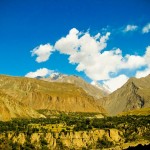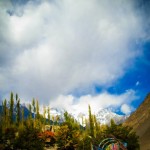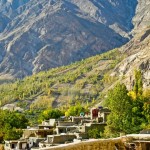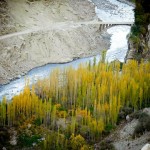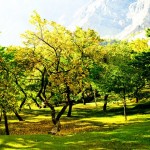Hunza is the most visited valley of Pakistan. It is a fairy tale land. It is surrounded by beautiful rugged and snow capped mountains. Hunza is a small town on Karakorum Highway only a 100Km from Gilgit. It is the first main stop from China to Pakistan.
The central part of Hunza known as Karimabad. It is a town of 6 villages. The first main village is Aliabad. There are prominent and outstanding views of Rakaposhi Mountain. PTDC Motel Hunza and other small hotels are located here. Just above Aliabad there are Altit and Baltit villages, the heart of Hunza. Altit & Baltit are famous for its interesting bazaar and two Forts. The Baltit fort has recently been converted into a guided museum. Duikar is another place in Hunza at a height of 10000 feet above sea level. This is an amazing spot to see sunrise. There are 8 peaks above 7000 meters. Each gives spectacular view of the sun light as sun rises.
Short History of Hunza:
Hunza was formerly an independent state, bordering China to the north-east and Pamir to its north-west. The state bordered the Gilgit Agency to the south and the former state of Nagar to the east. The state capital was the town of Baltit and its old settlement is Ganish Village. It was dissolved by Zulfikar Ali Bhutto in 1974.
Hunza was an independent for more than 900 years. The British gained its control and the valley of Nagar between 1889 and 1892 followed by a military engagement of severe intensity. The ruler of Hunza Mir Safdar Ali Khan fled to Kashghar in China. The British appointed Mir Jamal Khan as the new Mir of Hunza under the rule of British Government
The traditional name for the ruler in Hunza was Thum. It is a respectful appellation used the people of Hunza and Nager. The ruling family of Hunza is called Ayeshe (heavenly). They are called so from the following circumstance. The two states of Hunza and Nagar were formerly one. Tradition relates that Mayroo Khan, apparently the first Muslim Thum of Nagar some 200 years after the introduction of the religion of Islam to Gilgit. He was the father of twins Girkis and Moghlot. The twins are said to have shown hostility to one another from birth. Their father unable to settle the question of succession, divided his state between them, giving to Girkis the north, and to Moghlot the south, bank of the river.
Both Thums are still addressed as Soori, as a title of respect. This appears to be the same as Sri, a commonly prefixed to the names of Hindu princes in India. The Thum’s wives are styled ghenish which is almost identical with the original Sanskrit word for mother, and their sons are called gushpoor.
Related Videos:
